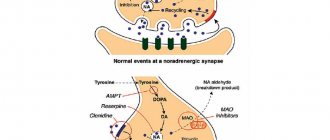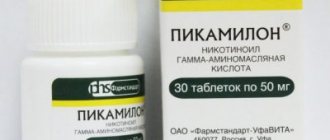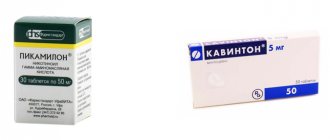Tranquilizers are medications that are used to relieve panic, anxiety, stress and depression. Drugs in this group are also called anxiolytics. The name comes from two Greek words that literally mean the dissolution of anxiety.
The tranquilizing effect manifests itself as follows:
- weakening of internal tension;
- reducing the feeling of anxiety, anxiety, fears.
These drugs have no effect on cognitive, that is, cognitive functions of the brain, or it is extremely weakly expressed.
They also do not affect mental disorders - hallucinations, delusions. Indications for use for all tranquilizers are various anxiety disorders. They are also prescribed to eliminate acute stress - for a short course of treatment.
What types of tranquilizers are there?
The group of tranquilizers is heterogeneous in its chemical composition. Their classification is based on this principle. In general, all tranquilizers are divided into two large groups:
- benzodiazepine derivatives;
- drugs of other pharmacological groups with anti-anxiety effects.
The most common benzodiazepine derivatives are Diazepam (Sibazon, Relanium, Valium), Phenazepam, Gidazepam, Alprazolam, Tofisopam (Grandaxin). Among tranquilizers from other chemical groups, the most common are Hydroxyzine (Atarax), Mebicar (Adaptol), Afobazol, Tenoten, Phenibut (Noofen, Anvifen), Buspirone (Spitomin).
Expected effects of tranquilizers
Most tranquilizers have a wide range of effects:
- reduce anxiety and calm (that is, sedate);
- relax muscles (myorelaxation);
- relieve convulsive readiness during epileptic seizures;
- have a hypnotic effect;
- stabilize the functions of the autonomic nervous system.
This or that effect of a tranquilizer is largely determined by its mechanism of action, the characteristics of absorption and breakdown. That is, not every drug “can” do all of the above.
Nature will calm your nerves
If you urgently need to put your nerves in order, it is better to turn to sedatives of plant origin. Corvalol, Corvaltab, Validol, Corvalment, Valerian have an effect similar to psychotropic drugs. Medicinal herbs will relieve tension and balance the nervous system: lemon balm, mint, oats, hyssop, lettuce, meadowsweet.
What are “daytime” tranquilizers?
Due to the characteristics of their effects, a group of so-called “daytime” drugs is distinguished among tranquilizers. "Day tranquilizer" means, first of all, that it does not have a sleeping effect. This tranquilizer does not reduce concentration, does not relax muscles, and maintains the speed of thinking. In general, it is generally accepted that it does not have a pronounced sedative effect. Daytime tranquilizers include Gidazepam, Buspirone, Tofisopam (Grandaxin), Mebicar (Adaptol), Medazepam (Rudotel).
How do tranquilizers work?
All tranquilizers work at the level of brain systems that form emotional reactions. This includes the limbic system, the reticular formation, the hypothalamus, and the thalamic nuclei. That is, this is a huge number of nerve cells scattered throughout different parts of the central nervous system, but interconnected. Tranquilizers lead to the suppression of excitation in these structures, and therefore the degree of a person’s emotionality decreases.
The direct mechanism of action is well studied for benzodiazepine derivatives. There are various benzodiazepine receptors in the brain that are closely related to gamma-aminobutyric acid (GABA) receptors. GABA is the main inhibitory substance in the nervous system. Benzodiazepine derivatives act on their receptors, which is transmitted to GABA receptors. As a result, the inhibition system is activated at all levels of the central nervous system. Depending on which benzodiazepine receptors are involved, the nervous system realizes one or another effect. Therefore, for example, there are tranquilizers with a pronounced hypnotic effect, which are used primarily for the treatment of sleep disorders (Nitrazepam). And other tranquilizers from the benzodiazepine group have a more pronounced anticonvulsant effect, and therefore are used as antiepileptic drugs (Clonazepam).
CM. SEE ALSO: Tranquilizers and antidepressants: what is the difference?
Tranquilizers of other pharmacological groups can affect nervous excitability not only through GABA, but also with the involvement of other transmitter substances in the brain (serotonin, acetylcholine, adrenaline and others). But the result is the same: elimination of anxiety.
Indications for use
Symptoms indicating the need to take tranquilizers:
- Fear
- Panic attacks
- Increased anxiety
- Mood swings, irritability, nervousness
- Sleep disorders
When choosing a drug, the question often arises: what is the difference between tranquilizers and antidepressants? If we talk about first-generation drugs and strong tranquilizers, their long-term use causes dependence and addiction, followed by withdrawal symptoms.
What is better, tranquilizers, antidepressants or antipsychotics, is decided by the doctor in each case.
Despite the relative safety of synthetic mild antidepressants, which are available without prescriptions, like any medications, if the dosage is not observed, if the drug is taken for too long, or if there is individual intolerance to the components, side effects may develop.
Manifested by allergies, drowsiness, decreased activity, dizziness, impaired coordination of movement, sweating, increased excitability, tachycardia.
With a strong increase in dosage, disorientation in space, convulsions, involuntary muscle spasms, clonic, tonic convulsions, and insomnia are possible.
As for contraindications, most synthetic antidepressants are contraindicated for use during pregnancy, breastfeeding, and children under 7-8 years of age. Drugs are not prescribed for chronic liver pathologies or kidney diseases.
Before use, be sure to consult your doctor, carefully read the instructions for the medication, study the indications and contraindications. When taking antidepressants, consider their compatibility with other pharmacological drugs.
You can take light sedatives and nootropics without harming your nervous system and health for no more than two to three months. Otherwise, addiction may develop.
You also need to understand that treatment with mild antidepressants is longer, and a positive effect can occur only five to seven weeks after starting to take the pharmacological agent. If an antidepressant causes side symptoms or does not have the desired effect, consult your doctor regarding the appropriateness of use and choice of medication.
When are tranquilizers needed?
Tranquilizers are designed to treat specific symptoms. That is, with their help they get rid of individual manifestations of various diseases. And the range of these diseases is very wide. It is impossible to list all situations when tranquilizers may be needed. But we will try to indicate the most common ones. Indications for the use of tranquilizers are:
- neuroses and neurosis-like conditions;
- syndrome of vegetative-vascular dystonia with panic attacks;
- premenstrual and menopausal disorders;
- many psychosomatic diseases (peptic ulcer of the stomach and duodenum, hypertension, coronary heart disease and others);
- post-traumatic stress disorder;
- convulsive syndrome;
- chronic alcoholism and drug addiction;
- reducing the desire to smoke;
- involuntary movements in the limbs and torso (hyperkinesis: tics, blepharospasm, myoclonus and others);
- increased muscle tone in various diseases (so-called muscle spasticity);
- premedication before surgery;
- sleep disorders;
- skin itching in patients with atopic dermatitis and allergic diseases.
Myths about tranquilizers and fear of their use
The need for treatment with tranquilizers, as well as the choice of drugs, is determined by the doctor.
Many people are afraid of the very word “tranquilizers”. For most, this term is associated with some kind of mental illness or with the inevitable formation of drug addiction, as well as with the likelihood of partial memory loss. Therefore, having read in the instructions or heard in a pharmacy that such and such a drug is a tranquilizer, people refuse to use it. I would like to dot the i's and dispel some of the myths associated with the use of tranquilizers.
Firstly, the above main indications for prescribing tranquilizers are mostly common diseases. After all, vegetative-vascular dystonia syndrome or gastric ulcer have nothing to do with mental disorders, right?! But without tranquilizers it is sometimes impossible to get rid of these ailments. Secondly, tranquilizers should only be prescribed by a doctor. The situation is completely wrong when a tranquilizer was recommended by a work colleague or neighbor, a pharmacist at a pharmacy, and so on. When prescribing a particular drug, the doctor will take into account the nature of the profession, the presence of concomitant pathology, and other factors to carry out a safe course of treatment. Thirdly, the tranquilizer should be taken in the minimum effective dose for the shortest possible course. WHO has determined the optimal timing of use of benzodiazepine tranquilizers in order to reduce the risk of addiction. It lasts 2-3 weeks. It is also recommended to carry out treatment in intermittent courses with a gradual reduction in dosage. Fourthly, there are tranquilizers that are not addictive. These are mainly tranquilizers of other chemical groups (Afobazol, Atarax, Mebicar). Their anti-anxiety effect is less pronounced compared to benzodiazepine tranquilizers, but when using them there is no fear of addiction even with long-term use. It should also be borne in mind that those symptoms that tranquilizers are designed to eliminate can be much more harmful to health than the use of tranquilizers itself. Thus, in fact, with a competent approach to the treatment process, the use of tranquilizers has significantly more advantages than disadvantages.
New generation antidepressants
These are new drugs, which mainly include antidepressants of the SSRI class. Among the drugs synthesized relatively recently, the following drugs have performed well:
- Sertraline
- Fluoxetine
- Fluvoxamine
- Mirtazaline
- Escitalopram
The range of tranquilizers includes the following groups of drugs:
- “elders” (1st generation drugs) – Meprobamate, Benactizine, Hydroxyzine;
- benzodiazepine derivatives (2 generations). Among them, in turn, are:
- potent drugs - Phenazepam, Lorazepam, Diazepam, Alprazolam. They help remove all types of anxiety, improve sleep, eliminate panic attacks, relieve fear and obsessions;
- medications that produce a moderate effect - Gidazepam, Clobazam, Chlordiazepoxide, Oxazepam, Bromazepam; drugs that cause severe drowsiness - Nitrazepam, Midazolam, Temazepam, Flurazepam, Triazolam, Estazolam;
- benzodiazepine tranquilizers that have an anticonvulsant effect - Diazepam, Clonazepam, Nitrazepam;
- more “fresh” tranquilizers (3 generations). The most well-known representatives of this series are Oxymethylethylpyridine succinate and Etifoxine.
After consuming them, a person feels an emotional and physical uplift, his performance increases, and his mental abilities improve. But when the effect of the drug wears off, apathy sets in, outbursts of aggression are noted, and memory loss is possible. Benzodiazepines provoke drug dependence within 1-3 weeks after the start of treatment.
The most common tranquilizers
Diazepam (Sibazon, Valium, Seduxen)
A drug with a long history of use in medicine. Due to the breadth of the spectrum of effects, the speed of onset of the effect, and the minimal frequency of side effects with the correct selection of doses, Diazepam occupies a strong position among tranquilizers. It has a pronounced anticonvulsant effect, which has made it a first-line drug for treating patients with epilepsy. Allows you to quickly eliminate panic attacks when administered intravenously, and has a pronounced anti-anxiety effect. There are dosage forms in the form of tablets, suppositories and solutions for parenteral use. Included in the list of drugs used by ambulance personnel. However, you should be careful with it: with its prolonged use for more than 2 months, addiction may develop. The drug is prescribed on a special prescription form and is not subject to free sale in pharmacy chains.
CM. SEE ALSO: Tranquilizers and antidepressants: what is the difference?
Phenazepam
This is one of the most powerful tranquilizers. It has to a pronounced extent all the main effects of tranquilizers: anti-anxiety, hypnotic, muscle relaxant, vegetative stabilizing. It is quickly absorbed when taken orally, and after about 15-20 minutes it begins to work fully. The undoubted advantage of Phenazepam is its relatively low cost. Also applies to prescription drugs. Taking Phenazepam should be strictly supervised by your doctor. Addiction to the drug can develop, so the most appropriate is its occasional use (the total duration of one course of treatment should not exceed 1 month).
Gidazepam
This tranquilizer has a pronounced anti-anxiety effect, while being devoid of strong sedative, hypnotic and muscle relaxant effects. This allows it to belong to the group of daytime tranquilizers. Well tolerated, very rarely causes side effects. It has a fairly wide safe dose range. It is produced in the form of tablets in doses of 20 and 50 mg, but is produced in Ukraine, so it cannot always be bought in the Russian Federation.
Tofisopam (Grandaxin)
Another daytime tranquilizer. Provides all the effects of this group of drugs, except miralaxant and anticonvulsant. Due to its good tolerability and lack of sedation effect, it is very widely used in the treatment of vegetative-vascular dystonia and menopausal disorders. Can be taken longer than other benzodiazepines without causing addiction. On average, the drug is used from 4 to 12 weeks continuously. Available in the form of 50 mg tablets.
Atarax (Hydroxyzine)
Another tranquilizer with great experience. In addition to all the effects inherent in tranquilizers, it has antiemetic and antiallergic effects. Approved for use in children. It has almost no effect on the cardiovascular system, which makes it attractive for elderly patients.
Adaptol (Mebicar)
Daytime tranquilizer. A relatively new drug among other tranquilizers. Not only does it not cause drowsiness and addiction, but it also has an activating and antidepressant effect. Many people note the normalization of brain activity and acceleration of thought processes when taking it. There is even information about the pain-relieving effect of the drug. May slightly reduce blood pressure. The drug has an effect even with a single use (for example, in a traumatic situation). Adaptol is approved for use by people whose professional activities involve work that requires attention and speed of response.
Tenoten
The drug is an antibody to a special brain protein. In addition to the anxiolytic effect, it has a nootropic effect. Improves tolerance to mental and physical stress, improves memory. There are dosage forms for children and adults. Can be used for several months (up to six months) if necessary without any addictive effect.
Buspirone (Spitomin)
A relatively “mild” tranquilizer because it is not addictive and does not sedate. It even has an antidepressant effect to some extent. It should be noted that the onset of clinical effect when using Buspirone will have to wait 7-14 days. That is, a single dose of 1 tablet is useless from the point of view of anti-anxiety action. Can be used for a long time (several months). Able to prevent sexual disorders with existing depressive symptoms.
Phenibut (Noofen)
Another drug that combines the effects of a nootropic and an anxiolytic. Improves memory, facilitates learning, exercise tolerance, improves sleep (without having a direct hypnotic effect). Able to eliminate involuntary movements (especially effective for tics), helps with motion sickness. Does not cause addiction with long-term use. Phenibut is considered primarily a nootropic drug with ankyolytic properties, so not all doctors consider it a tranquilizer.
Afobazole
A modern daytime tranquilizer without addictive effects. It is well tolerated by patients, but it works only at the end of the first week of use (and therefore is not suitable for quickly eliminating anxiety). On average, it will take 1 month of taking it to develop a sustainable effect. It is especially indicated for emotionally vulnerable and delicate spiritual natures, prone to self-doubt and suspiciousness.
It becomes clear from all of the above that tranquilizers are a group of medications necessary to preserve people’s mental health. They help relieve tension from the human nervous system in the modern world in order to prevent the development of many diseases. However, they cannot be used independently and uncontrollably, so as not to harm yourself. Tranquilizers have the right to exist provided they are prescribed by a doctor.
Operating principle
You may hear that tranquilizers are called anxiolytics, and the effect they have on the body is anxiolytic. It is characterized by a decrease in general anxiety, the disappearance of obsessions, and a decrease in hypochondria. Anxiolytics are effective in getting rid of emotional instability and pronounced stress, but they are not used for mental illness, which is why the need to take them must be determined by a doctor.
Additionally, medications from the tranquilizer group have a complex effect on the body:
- Calm;
- Improve sleep quality;
- Relieves cramps;
- Helps relax muscles.
Not every effect is found in all items presented in the pharmacy. It depends on the main active ingredient and auxiliary composition. Most of them negatively affect the speed of psychomotor reactions, so it is recommended to stop driving a car during treatment. It is not recommended to carry out activities that are potentially hazardous to health and require increased concentration.
Tranquilizers may not cause drowsiness, but they certainly reduce the level of daytime activity and the duration of wakefulness. Taking medication on a schedule helps to establish a daily routine, adjust the alternation of sleep phases, and improve the quality of rest. But as a side effect, there is an increase in sleep duration to 16 hours.











